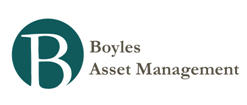Bill Gross – March 2011 Investment Outlook: Two-Bits, Four-Bits, Six-Bits, a Dollar
Many critics, though, including yours truly, would wonder whether Quantitative Easing policies actually heal, as opposed to cover up, symptoms of an unhealthy economy. They might at the same time ask simplistically whether it is possible to cure a debt crisis with more debt. As I have discussed in numerous Investment Outlooks, the odds of an ultimate QE success seem critically dependent on several criteria: (1) initial sovereign debt levels that are relatively low. Reinhart and Rogoff in their book “This Time Is Different” have suggested an 80–90% of GDP limit to sovereign debt levels before they become counterproductive; (2) the ability of a country to print globally acceptable scrip – especially enhanced if that nation has the reserve currency status now ascribed to the U.S.; and (3) the willingness of creditors to believe in future real growth as a rebalancing solution to current excessive deficits and debt levels.
Most observers would agree with us at PIMCO that QE I and II programs were initiated and employed under the favorable conditions of (1) and (2). The third criterion (3), however, is more problematic. A successful handoff from public to private credit creation has yet to be accomplished, and it is that handoff that ultimately will determine the outlook for real growth and the potential reversal in our astronomical deficits and escalating debt levels. If on June 30, 2011 (the assumed termination date of QE II), the private sector cannot stand on its own two legs – issuing debt at low yields and narrow credit spreads, creating the jobs necessary to reduce unemployment and instilling global confidence in the sanctity and stability of the U.S. dollar – then the QEs will have been a colossal flop. If so, there will be no 15%+ tip for the American economy and its citizen waiters. An inflation-adjusted “negative buck” might be more likely.
Washington, Main Street – and importantly from an investment perspective – Wall Street await the outcome. Because QE has affected not only interest rates but stock prices and all risk spreads, the withdrawal of nearly $1.5 trillion in annualized check writing may have dramatic consequences in the reverse direction. To visualize the gaping hole that the Fed’s void might have, PIMCO has produced a set of three pie charts that attempt to point out (1) who owns what percentage of the existing stock of Treasuries, (2) who has been buying the annual supply (which closely parallels the Federal deficit) and (3) who might step up to the plate if and when the Fed and its QE bat are retired. The sequential charts 1, 2 and 3 are illuminating, but not necessarily comforting.
What an unbiased observer must admit is that most of the publically issued $9 trillion of Treasury notes and bonds are now in the hands of foreign sovereigns and the Fed (60%) while private market investors such as bond funds, insurance companies and banks are in the (40%) minority. More striking, however, is the evidence in Chart 2 which points out that nearly 70% of the annualized issuance since the beginning of QE II has been purchased by the Fed, with the balance absorbed by those old standbys – the Chinese, Japanese and other reserve surplus sovereigns. Basically, the recent game plan is as simple as the Ohio State Buckeyes’ “three yards and a cloud of dust” in the 1960s. When applied to the Treasury market it translates to this: The Treasury issues bonds and the Fed buys them. What could be simpler, and who’s to worry? This Sammy Scheme as I’ve described it in recent Outlooks is as foolproof as Ponzi and Madoff until… until… well, until it isn’t. Because like at the end of a typical chain letter, the legitimate corollary question is – Who will buy Treasuries when the Fed doesn’t?
- Deleveraging, What Deleveraging? - The 16th Geneva Report On The World Economy
Link to report: Deleveraging, What Deleveraging? It is widely accepted that high levels of debt (of various forms) have played a central role in the 2008-09 global financial crisis, the 2010-12 euro crisis and many previous crisis episodes. The adverse...
- Hussman Weekly Market Comment: The Outlook Will Shift As Conditions Shift
Our investment outlook will shift as market conditions shift, and we will lean toward a more constructive stance when conditions support it. There are straightforward ways to do that while still remaining careful about larger cyclical risks. Present conditions...
- Hussman Weekly Market Comment: Simple Arithmetic
As I've noted several times in recent months, bond market spreads imply very low near-term (3-6 month) probability of default in any Euro-area country. A sovereign default is much more likely to occur near the end of the next bear market, whenever...
- John Mauldin: The Debt Supercycle
The Debt Supercycle When I mention The End Game, you’ll immediately want to know what is ending. What I think is ending for a significant number of countries in the “developed” world is the Debt Supercycle. The concept of the Debt Supercycle was...
- Bill Gross – June 2010 Investment Outlook: Three Will Get You Two (or) Two Will Get You Three
Several months ago I rhetorically asked whether it was possible to get out of debt crisis by increasing debt. Yes – was the answer, but it was a qualified yes. Given that initial conditions were favorable – relative low debt as a % of GDP, with the...

